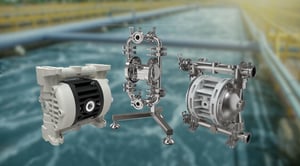
A Complete Guide to Air Operated Diaphragm (AODD) Pumps
A Complete Guide to Air‑Operated Diaphragm (AODD) Pumps
Contents
- What are AODD pumps are & how they work
- AODD pump benefits
- Common AODD pump types
- Typical applications
- Key safety and performance considerations
- Selecting the right AODD pump
- Maintenance best practices
- Why invest in AODD pumps
What are AODD pumps?
AODD stands for air-operated double diaphragm. These are a type of positive displacement pump which use compressed air to move a wide variety of liquids – from water and chemicals to thick sludges and slurries.
What is the difference between AODD & AOD pumps?
AOD = Air-operated diaphragm – a general term for any diaphragm pump powered by compressed air, technically referring to either single or double diaphragm.
AODD = Air-operated double diaphragm – a specific type of AODD pump with two diaphragms working alternately (which is by far the most common type used across industries)

How do they work? 🔧
Imagine two flexible diaphragms connected by a shaft. These diaphragms move back and forth (similarly to lungs)
- Air is pumped into one side of the pump, pushing one diaphragm forward.
- This movement forces liquid out of the pump on that side.
- At the same time, the opposite diaphragm creates a vacuum, pulling new liquid into the pump.
- A valve switches the air to the other side, and the process repeats.
Want to know more about the differences between pumps head over to our article ‘AODD vs Electric Diaphragm vs Centrifugal Pumps: What's the Difference?’
AOD pump benefits
If you’re handling chemicals, slurries, viscous fluids or operating in a hazardous environment, you need a pump that’s not only versatile but also reliable and safe.
Air-operated diaphragm pumps are known for their rugged simplicity and ability to handle those challenging applications – which is why they’ve become such a trusted choice across industries.
So, let’s delve into their key benefits and why AOD pumps may be the ideal solution for your process.
- AODs are able to run dry indefinitely without any damage to the internal components - this makes them ideal for unpredictable process conditions.
- They are perfect for above-tank installations or empty lines due to their ability to self-prime and pull fluid into the pump on their own (up to 6 metres in suction lift).
- AOD pumps are work well for handling and passing solids plus pumping thick, abrasive or shear-sensitive fluids with ease. This is because they displace fluid without a spinning impeller or high-speed movement. Ideal for paints, sludges, food products and chemical slurries.
- As they are air-powered (no electric motor) they are intrinsically safe and are commonly used in hazardous environments (ATEX rated zones with flammable vapours or dust).
- Compact designs and no need for electrical connections means they can be moved easily and are perfect for space saving requirements. Ideal for spill response, temporary setups and mobile tanks or IBC offloading.
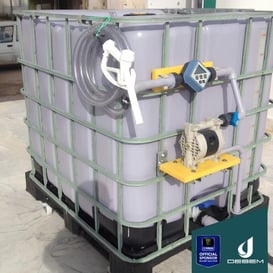
- Fewer moving parts and no complex seals or mechanical couplings means simple maintenance. Diaphragms and valves can be accessed and replaced quickly.
- As AODs don't rely on alignment or orientation, it gives you more freedom if you have only a tight space available.
Explore your options
Whether you’re dealing with aggressive chemicals or ATEX-rated environments, AODD pumps offer a reliable and flexible solution.
If you’re ready to find the right pump for your application browse our full range of AODD pumps here. Each model is hand-selected for performance, reliability, and chemical compatibility.
When selecting a pump for your process, one of the most important factors to consider is fluid viscosity. Whether you're pumping water-thin solvents or thick, sticky slurries, viscosity can significantly affect flow rate, pump life, and overall system performance. If you'd like to know more, you can read our blog post Low vs High viscosity performance here.
Common types of AODD pumps
Metal AODD pumps
Typically made from Stainless Steel, Aluminium or Hastelloy which all offer excellent chemical resistance, strength and durability. Best for Solvents, Oils, Hydrocarbons and flammable fluids.
Plastic AODD pumps
Usually manufactured from Polypropylene (PP) or PVDF which are both typically used in industries where metal would corrode, e.g. chemicals and acids. 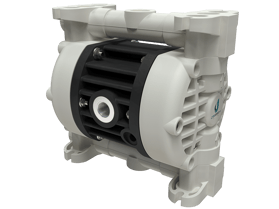
PTFE-lined AODD Pumps
The PTFE (Teflon) lining gives maximum chemical resistance, best for highly aggressive chemicals, solvents or ultra-pure media. These pumps have a metal body with a PTFE liner inside.
Sanitary / FDA approved AODD pumps (Hygienic design)
 Sanitary diaphragm pumps are built with 316L Stainless Steel and are designed for CIP/SIP (Clean-in-place/Steam-in-place) ideal for food, beverage, dairy and pharmaceutical industries.
Sanitary diaphragm pumps are built with 316L Stainless Steel and are designed for CIP/SIP (Clean-in-place/Steam-in-place) ideal for food, beverage, dairy and pharmaceutical industries.
Submersible AODD pumps
Some AODD pumps can be installed fully submerged in sumps, pits or flooded environments – these are useful for remote or mobile setups or where electrical pumps are unsuitable.
High pressure AODD pumps
The standard output pressure for an AODD pump is around 6-8 bar, but high-pressure models can deliver up to 15-20 bar. These are ideal for pressure-intensive applications like filter press feeding or long discharge runs.
Mini or compact AODD pumps
Small-format AODD pumps (often <½”) are great for low-flow precision tasks or space-limited environments. These are for laboratory dosing, sampling and portable systems.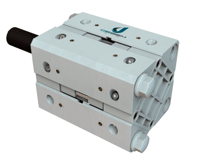
✅ Ready to find the right AODD pump for your process? Explore Crest Pumps’ full range here, or get in touch with our technical team for expert advice.
Typical AODD applications
🧪 Chemical Transfer
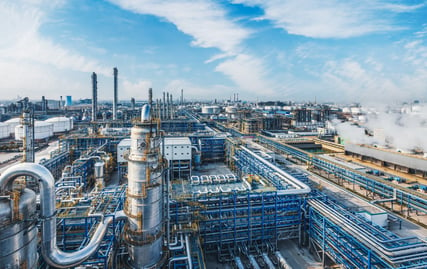
Many chemicals are corrosive, toxic, volatile, or all three — and need careful handling.
Why AODD Pumps Work:
- They have no seals or rotating parts that can fail under chemical attack
- PTFE, PVDF, or polypropylene options offer excellent chemical compatibility
- Safe in ATEX environments — no electricity required
Used for: Acids & Caustics, Solvents & alcohols, Chlorine, Sodium Hypochlorite & Hydrogen Peroxide.
🏭 Wastewater and Effluent Treatment
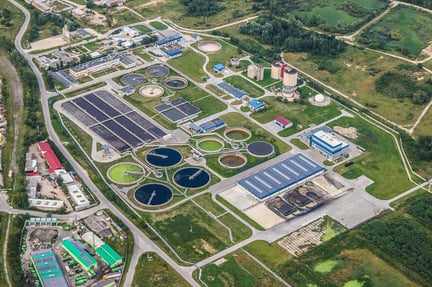
Effluent can be dirty, abrasive, full of solids, or contain mixed chemicals.
Why AODD Pumps Work:
- Self-priming and able to run dry
- Handles sludges, slurries, and solids without clogging
- Perfect for intermittent or batch pumping without burnout
Used for: Sludge transfer, Chemical dosing & pH Correction & Flocculant feed.
🛢️ 3. Oil & Gas / Petrochemicals
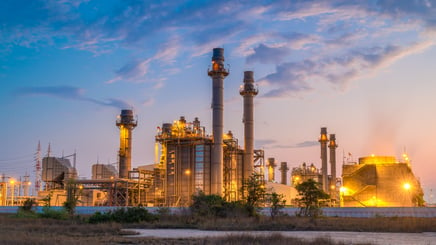
Flammable liquids, explosive environments, and highly viscous or abrasive media.
Why AODD Pumps Work:
- Available in ATEX-certified versions
- Handles thick fluids like crude oil or grease
- Portable and robust — perfect for mobile and offshore use
Used for: Drilling mud & crude oil, tank-to-tank transfer & refinery chemical dosing.
🍯 4. Food & Beverage Processing
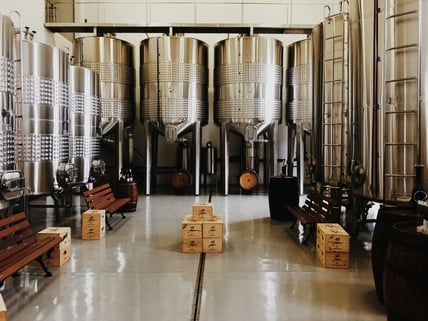
Shear-sensitive, viscous, or hygienic fluids that must be handled delicately.
Why AODD Pumps Work:
- Sanitary (CIP/SIP) options with FDA-approved materials
- Low shear pumping for delicate products
- Easy disassembly for cleaning
Used for: Syrups, sauces, honey, dairy, additives & flavourings & cleaning solutions in CIP systems.
🧼 5. Paints, Inks & Coatings

Viscous fluids, with a risk of settling, clogging or drying in pipes.
Why AODD Pumps Work:
- Strong suction power and solids handling
- Safe with flammable solvents
- Compact and portable for spraying or dosing setups
Used for: Pigments, resins, adhesives, solvents & water-based paints, printing inks & coatings.
⚗️ 6. Mining and Minerals

Highly abrasive slurries, dust, and remote, rugged environments.
Why AODD Pumps Work:
- Can handle solids and grit-laden fluids
- No need for electricity in remote areas
- Resistant to wear and simple to maintain on-site
Used for: Slurry transfer, chemical dosing & dewatering from pits & sumps.
🧬 7. Pharmaceuticals and Cosmetics
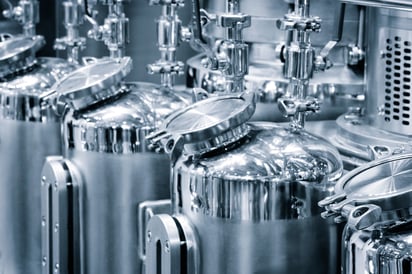
Ultra-pure or viscous fluids requiring hygienic conditions and zero contamination.
Why AODD Pumps Work:
- Gentle pumping preserves product quality
- Available in sterile, hygienic designs
- No mechanical seals to leak
Used for: Creams, gels, lotions, vaccine & serum transfer, Lab-scale batching.
🚛 8. Tanker Offloading & Mobile Transfer
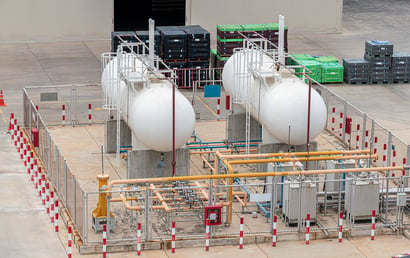
Fluids must be moved quickly and safely — often outdoors or on the move.
Why AODD Pumps Work:
- Fully portable with air supply
- Self-priming and handles variable fluids
- Can be mounted to skids, trailers or totes
Used for: Fuel & solvent offloading, acid & chemical bulk transfer, IBC, barrel or tote emptying.
Key safety & performance considerations
AODD (Air-Operated Double Diaphragm) pumps are known for being rugged, reliable, and versatile — but to operate them safely and efficiently, there are a few things you must get right.
We've got a quick-fire breakdown of the most important safety and performance factors to keep in mind.
Air Supply: Don’t Overpower It. Use clean, dry compressed air & regulate pressure (typically 2-8 bar). Avoid running "wide open" as it wastes energy and wears components. And add an FRL (filter, regulator, lubricator) unit for long-term health.
💡 Too much air = excess wear
💡 Too little = poor performance or stalling
Material Compatibility: Match the Pump to the Fluid. Check all wetted parts (body, balls, seats, diaphragms). Use PTFE, PVDF or PP for harsh chemicals, and use Stainless Steel for solvents or food-grease applications.
⚠️ Mismatching chemicals & materials = early failure or swelling.
ATEX Zones: Safety in Explosive Environments. Choose ATEX-approved pumps for flammable areas and ensure proper electrical grounding to avoid static discharge.
⚠️ Even non-flammable liquids can create explosive vapours!
Dry Running & Deadheading: AODD Pumps Handle It. They are self-priming, safe to run dry, and safe to operate against closed valves (dead head). But:It'll still use air even when fluid isn't moving.
⚡ Great for batch processes or tank emptying
Flow Pulsation: Control the Surge. AODD pumps produce pulsed flow - you can add pulsation dampeners to reduce shock. Use flexible pipe or hose to absorb vibration and anchor the pump to avoid movement.
🧠 Smoothed flow = better accuracy in metering systems
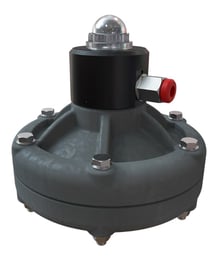
Maintenance Planning: Diaphragms Don’t Last Forever. Diaphragms eventually wear with stroke count, especially with abrasives - install a counter or other smart device to monitor remaining pump life. Keep spare kits handy, and inspect regularly for cracks or fatigue.
🧰 Easy to service — no need for specialist tools
Suction Setup: Keep It Clean & Simple. Prefer flooded suction if possible, minimise suction lift and bends in pipework and use strainers/filters to catch any solids.
⚠️ Poor suction = cavitation, wear, or dry strokes
Selecting the right AODD pump
Choosing an Air-Operated Double Diaphragm (AODD) pump might seem straight forward at first glance — but the wrong choice can lead to downtime, excessive wear, and even dangerous system failures. The right pump, on the other hand, will deliver years of reliable, low-maintenance performance.
In this section, let's break down the key considerations for selecting the ideal AODD pumps for your application! 
1. Understand the Fluid You’re Pumping
AODD pumps are prized for their ability to handle a wide range of fluids — but only if the pump materials are compatible.
Ask yourself:
- Is it corrosive, abrasive, or flammable?
- What is the viscosity (thickness)?
- Are there solids in suspension?
- What is the temperature range?
Material Options:
|
Material |
Best for |
|
Polypropylene |
Light chemicals, low cost |
|
PVDF (Kynar) |
Aggressive acids, high strength |
|
PTFE (Teflon) |
Broad chemical resistance |
|
Aluminium |
Solvents, oils (non-corrosive) |
|
Stainless Steel |
Food, pharma, solvents, hygienic |
|
Santoprene, EPDM, Viton |
Varied diaphragm materials for compatibility |
💡 A compatibility chart is your best friend — and we have just the one for you which gets regularly updated and is simple to use!
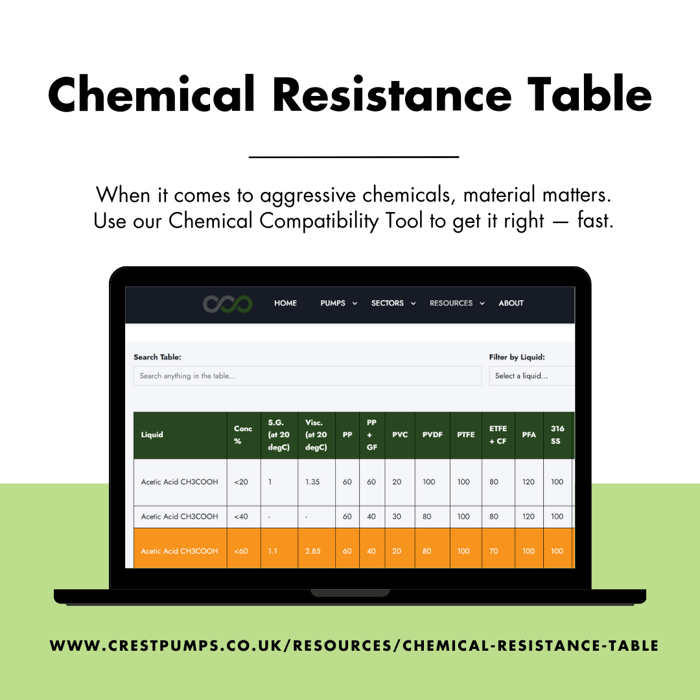
2. Flow Rate and Pressure Requirements
Next, determine how much fluid you need to move — and how fast.
Key specs:
- Required flow rate (litres per minute or m³/h)
- Discharge pressure (bar or PSI)
- Suction lift or flooded suction?
- Piping system resistance (head, friction losses)
AODD pumps can self-regulate based on air pressure — but selecting a model too small will stall performance, while one too large will waste energy and cause over-pulsing.
⚠️ Note: AODD pumps are not typically high-pressure devices. If you need over 8 bar consistently, consult with us for alternatives.
3. Viscosity and Solids Handling
Not all AODD pumps are equal when it comes to thick or solid-laden fluids.
Consider:
- Fluid viscosity in centipoise (cP)
- % solids and particle size
- Does the fluid settle or shear easily?
For thick fluids like honey, sludge, or ink, you’ll want:
- A larger suction inlet
- Lower cycle speed (to reduce cavitation)
- Stronger air pressure and flow
🛠️ We can size a pump specifically for shear-sensitive or solids-heavy applications.
4. Safety: ATEX, Food-Grade, or Hygienic Requirements
Your environment matters. Is the pump going into a hazardous area or a cleanroom?
Common needs:
- ATEX Certification – for explosive atmospheres (Zone 1 or 2)
- FDA or EC1935 Compliance – for food or drink applications
- 3A or EHEDG Standards – for pharmaceutical or aseptic production
These conditions will affect your material, design, and diaphragm selection.
⚡ AODD pumps are air-powered — ideal for ATEX zones where electric motors are a no-go.
5. Air Supply: Size and Quality
An AODD pump is only as good as its air supply.
Check:
- Is compressed air available?
- What is the air pressure and flow capacity?
- Do you have a filter-regulator-lubricator (FRL) setup?
Dirty or wet air can damage the pump’s air valve system. Oversupplying air also leads to higher energy costs and component fatigue.
💡 Don’t forget — your compressor must handle both pressure and volume demands for the pump and other air-powered tools.
6. Installation Conditions
Where the pump is physically going can influence your selection.
- Is it mobile or fixed?
- Do you have space constraints?
- Is the pump above or below fluid level?
- Is pulsation a concern in your lines?
You may also need:
- Flexible hoses to reduce vibration
- Pulsation dampeners for smooth flow
- Mounting feet or bases for stability
If you’re planning to move the pump often (e.g., from IBC to IBC), portability and material toughness become a major factor.
Don’t Guess — Ask
With so many options for pump body materials, diaphragm types, air systems, and certifications, guessing isn’t worth the risk. A few minutes spent understanding your process will save hours of maintenance or downtime later. Speak to us today for tailored advice.
Maintenance best practices
In this section, we’ll explore essential maintenance best practices for AODD pumps to help you keep your equipment running smoothly and efficiently.
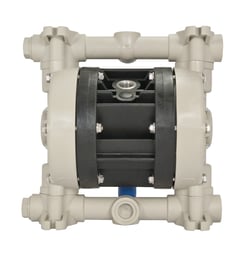
The foundation of good maintenance is routine inspection. Operators should regularly check the pump for signs of wear, leaks, or damage. Key areas to inspect include:
- Diaphragms: Look for cracks, bulges, or thinning material.
- Air valve: Ensure the air valve is clean and functioning without sticking.
- Seals and O-rings: Check for wear or deterioration to prevent leaks.
- Pump housing and connections: Inspect for corrosion, cracks, or loose fittings.
Regular cleaning is also vital, especially when pumping sticky, abrasive, or corrosive fluids. Flush the pump with an appropriate cleaning solution to prevent material buildup, which can impair pump performance.
Diaphragm Maintenance and Replacement
The diaphragms are the heart of AODD pumps and require special attention. Over time, diaphragms experience mechanical fatigue and chemical degradation. Follow these tips for diaphragm care:
- Use diaphragms made of materials compatible with the pumped fluid.
- Replace diaphragms as soon as any damage or wear is detected.
- Keep spare diaphragms on hand to minimize downtime during replacement.
Air Supply Quality
Since AODD pumps operate using compressed air, the quality of the air supply is critical. Poor air quality can cause air valve sticking, corrosion, or premature wear. Best practices include:
- Use a properly sized air filter and lubricator.
- Drain moisture traps frequently to prevent water from entering the pump.
- Maintain regulated air pressure within the manufacturer’s recommended range.
- Use clean, dry, and oil-free compressed air when possible.
Lubrication and Moving Parts
Some AODD pumps have parts that require lubrication, such as the air valve or pilot valve. Always use the lubricant recommended by the manufacturer and apply it as per the maintenance schedule. Avoid over-lubrication, which can attract dirt and cause malfunctions.
Monitor Performance Indicators
Keeping an eye on performance metrics can signal when maintenance is needed:
- Flow rate: A sudden drop may indicate diaphragm wear or blockage.
- Air consumption: Increased air usage could signal leaks or inefficient operation.
- Noise and vibration: Changes can indicate internal damage or misalignment.
Scheduled Preventive Maintenance
Implement a preventive maintenance plan that includes:
- Regularly scheduled inspections.
- Diaphragm and seal replacement intervals.
- Cleaning routines.
- Air system checks.
Document maintenance activities to track trends and predict future repairs.
Proper maintenance of AODD pumps ensures reliable operation, reduces downtime, and extends the life of your equipment. By adhering to regular inspection routines, maintaining air supply quality, monitoring pump performance, and replacing worn components promptly, operators can maximize pump efficiency and protect their investment.
If you’re unsure about specific maintenance requirements for your AODD pump model, always consult the manufacturer’s manual or seek advice from a pump specialist.
Why invest in AODD pumps?
When it comes to fluid handling, choosing the right pump can make all the difference in operational efficiency and long-term costs. Air-operated double diaphragm (AODD) pumps stand out as a smart investment due to their unique combination of reliability, versatility, and ease of maintenance.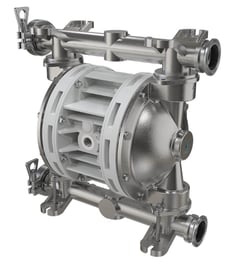
AODD pumps can handle a wide range of fluids — from corrosive chemicals and abrasive slurries to delicate food products — making them suitable for diverse industries such as chemical processing, pharmaceuticals, food and beverage, and wastewater management. Their ability to run dry without damage and operate in hazardous or explosive environments adds to their appeal.
Investing in AODD pumps means benefiting from low energy consumption, simple installation, and minimal maintenance requirements. These factors translate to reduced downtime and lower total cost of ownership.
Ready to boost your productivity and reliability?
Browse our AODD pump products now and find the perfect solution for you today.






